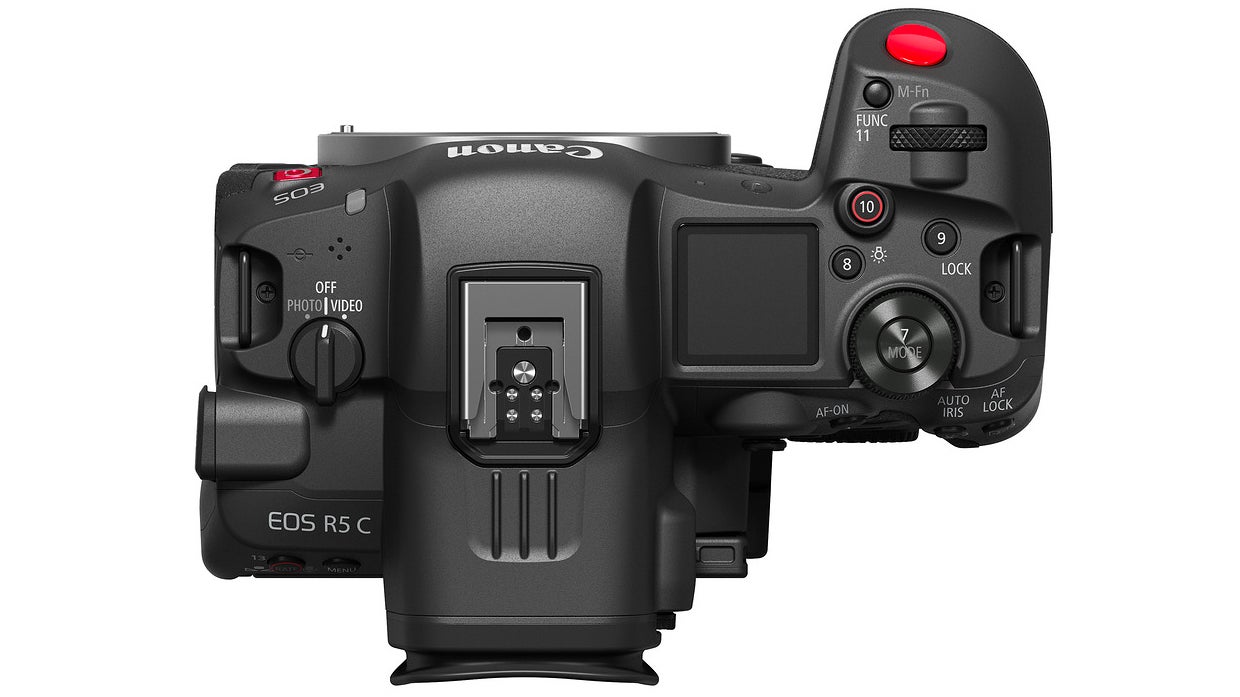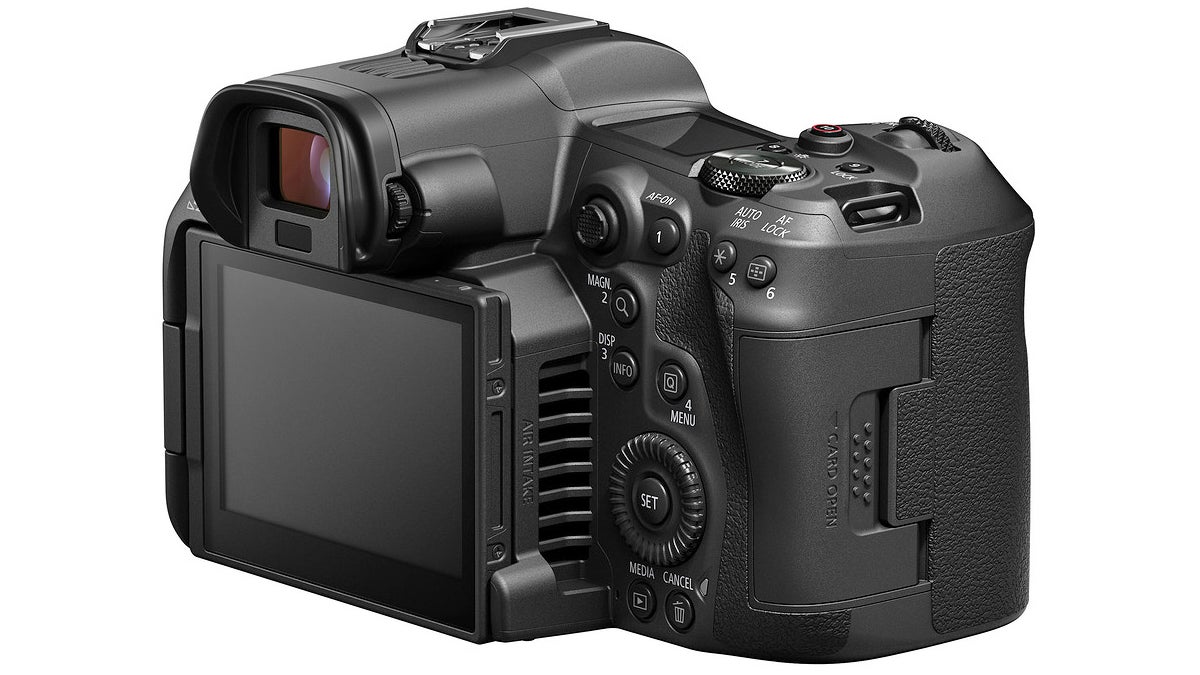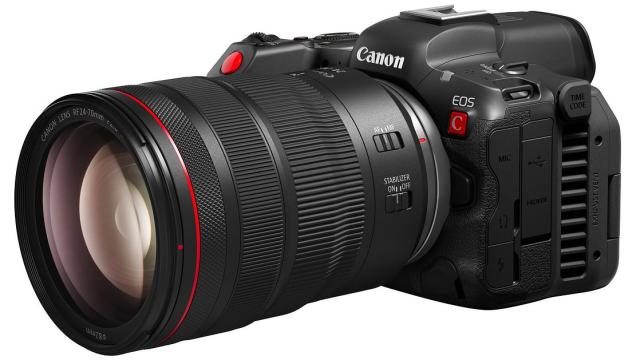The video capabilities of digital cameras have improved dramatically over the years, but there are still many good reasons to opt for a dedicated camcorder, including menu systems streamlined for video and longer record times. With its new EOS R5C, however, Canon takes one step closer to creating the perfect all-in-one digital shooter with both excellent still capture and video capture capabilities in a single body.
Based on the Canon EOS R5 that was released in the Summer of 2020, the R5 C is described as a “true hybrid” shooter by Canon and while it appears to deliver on that claim, it’s still not without a couple of compromises.

A new three-way power switch lets the camera be quickly and easily switched between video and photo modes, while button labels across the camera are labelled either in white for photo-specific functions or grey for video. In photo mode, the EOS R5 C includes almost all of the features and capabilities of the older R5 — features like a 45-megapixel CMOS sensor, an ISO range of 100 to 51,200 (that’s further expandable to 102,400), continuous full-resolution shooting at up to 12 frames per second with its mechanical shutter, or up to 20 FPS with a silent electronic shutter, 1,053 automatic autofocus zones, as well as smart autofocus capabilities that can track eyes, heads, faces, as well as the same features on animals.
For the EOS R5 C, Canon has omitted the R5’s mechanical in-body image stabilisation, so the hybrid shooter instead has to rely on a combination of electronic stabilisation tricks as well as in-lens mechanical stabilisation, which will result in some minor cropping.

The most obvious difference between the EOS R5 and the new EOS R5 C is the latter being blessed with an extended body to accommodate an “active cooling system.” One of the biggest challenges with adding video capabilities to digital still cameras is that they’re often engineered to be as compact as possible to facilitate shooting in hand, but that doesn’t leave much room for heat dissipation, and recording video at high resolutions generates a lot of heat. For the EOS R5 C, Canon has compromised on the R5’s overall size with additional fans and venting, but it allows the hybrid to shoot 8K video at 60 frames per second for as long as the storage — either internal or external — has capacity remaining.
At 8K resolutions the EOS R5 C can capture directly to Canon’s Cinema RAW Light format at 12-bit when using an SD card in the camera, but when using an external recorder, 8K video can also be captured to Apple’s ProRes RAW format at up to 30 FPS. When stepping down to 4K, the EOS R5 C can boost its capture speed to 120 FPS for capturing high-speed action with full autofocus and subject tracking capabilities, and the camera will still record audio to a separate .WAV file whereas most video cameras capable of high-speed photography require an external audio recorder to be used.
The Canon EOS R5 C is scheduled to be released sometime in March with a $US600 ($833) price bump over the EOS R5 to $US4,499 ($6,246).
